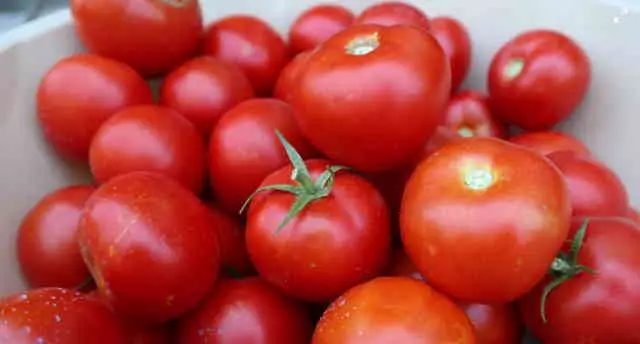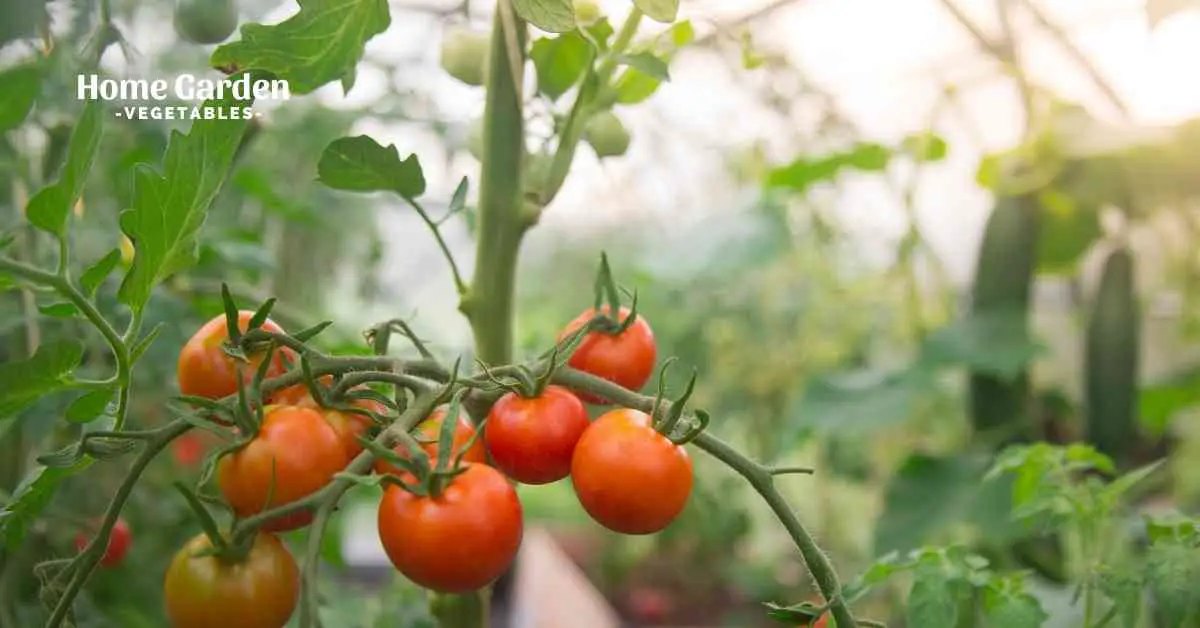When growing tomatoes, choose a variety based on your preferences for flavor and texture as well as the amount of space you have available. Various tomato cultivars may be found that grow as either vines (cordon) or bushes.
In greenhouses and polytunnels, vine tomatoes, also known as indeterminate, are the ideal choice. Tomatoes that mature on their own are the most often grown. Tomatoes on this plant may reach lengths of up to three meters. Varieties of bush tomatoes usually referred to as determinate tomatoes, are smaller and more compact, making them perfect for planting in containers outdoors.
Reader Poll: What online courses would interest you?

Best Tomatoes To Grow
Vine kinds (also known as indeterminate) of tomatoes are best suited to greenhouses and polytunnels because of their huge size and the care they need to be taken. Plants with shorter lifespans, such as biennials, are less common. When growing tomatoes, just one primary stem should be used; any secondary growth should be cut off as needed. Tomato plants may grow up to several meters in length, thus they need to be maintained. The use of our support structure and Roller Hooks would be excellent.
Determinate is another name for bush kinds. These are perfect for growing outdoors since a bamboo cane makes it easier to sustain their compact, bushy growth. A few of the most well-known kinds include Tumbling Tom, Red Alert, and Garden Pearl (also known as Garden Pearl). No need to remove side branches with these cultivars since they produce enough of them on their own!
Here are a few of the best favorites: Unless otherwise specified, all projects are considered to be on an indefinite timeline.
Subscribe to our newsletter!
Alicante Tomatoes
Alicante Tomatoes are medium-sized, meaty, and flavorful. A well-known cultivar that bears large harvests of medium-sized meaty fruits with a delicious flavor and matures early.
Tigeralla
This beautiful red and yellow-stripe tomato has a deliciously rich, tangy taste to go along with its stunning appearance. Makes big harvests up to 3 weeks sooner than the other well-known early cropper, the “Moneymaker”. It thrives in the open air, as well as in a polytunnel or greenhouse setting.
Gardener’s Delight
Bite-sized variety is quite popular since it’s dependable and plentiful. This tomato is bursting at the seams with sweet-and-salty flavor. On lengthy trusses, the plants produce a large harvest of fruits. Bushes or single stems with side branches cut may be cultivated inside or outdoors as a single plant.
Beefsteak Tomato
With its meaty flavor, the Country Taste Beefsteak tomato may weigh up to 227g (1/2lb) when the trusses are thinned to enable three or four ripening fruit per stem. A greenhouse-grown beefsteak tomato that is among the first to set and ripen. Tomatoes are a common display item.
Cristal
Firm, spherical, glossy scarlet-skinned fruits with ruby-red, black meat are known as Cristal. The tomatoes have a net weight of 120g (4oz) and cost nothing. The best place to grow it is in a polytunnel or greenhouse, but it may also be grown in a warm, sunny spot outside. Excellent ability to fight against infection.
Marmande Tomatoes
In Provence, the favorite tomato variety is the Marmande. Stunning ribs adorn these meaty tomatoes, which are enormous and loaded with juicy flavor. Cuts beautifully. However, a greenhouse or polytunnel may be used instead. I’m a little unsure and might need some help.
Sungold
Every year, we plant new seeds of Sungold in our garden to harvest. Cherry tomato with thin skin and golden orange coloration is very popular for canning. Outdoor or greenhouse/polytunnel cultivation options are available.
San Marzano
San Marzano is the only tomato that may be used in Vera Pizza Napoletana, and it is the tomato of choice among chefs (True Neapolitan Pizza). Flavorful, with thin flesh and few seeds, and the right combination of acid and sweetness. Perfect for making passata, making pizza, and roasting vegetables.
How To Grow Tomatoes
A greenhouse is a perfect place to grow tasty tomatoes. Compared to other herbs you may be growing, they demand a little more attention and care to thrive. For your tomatoes to grow large and robust, you’ll have to do some more work in the garden.
The best conditions for growing tomatoes in a greenhouse are a constant temperature of 70 to 75 degrees Fahrenheit (no lower than 60 degrees), plenty of sunlight, and excellent ventilation. It is recommended to stake tomato plants and to add fertilizer to the soil before planting. A few of the best greenhouse tomato cultivars include Sungold, Cappricia, Gardener’s Delight, and Sweet Million.
The following materials are required to start your tomato plants
- Plant Stakes
- Tomato Seeds
- String
- Nutrients in the soil
It is necessary to prepare the soil by adding fertilizer and nutrients before starting your tomato plants. Tomato seeds should be sown 2 to 3 inches below the surface of the soil is used. The tomato plant should be planted underground if you are using pre-grown ones. Tie off sections of the plant’s stem to a stake that you place next to it while it is a little seedling. That way, it won’t start to fall apart from the inside out.
To grow properly, tomatoes need a constant and warm temperature, good air circulation, and a lot of exposure to sunlight. Tomatoes like temperatures between 70 and 75 degrees Fahrenheit during the day and 60 degrees Fahrenheit at night.
Humidity is good for your greenhouse plants, but too much of it is bad for them. Reduce the likelihood of disease propagation and maintain a healthy humidity level by keeping the humidity below 90% and providing sufficient ventilation so that there is consistent air movement and a path for hot air to leave. Open a window or install an exhaust fan to let hot air out of your greenhouse naturally. Lastly, examine how much sunshine is available. Tomatoes need a lot of sunshine, so placing them near a window or a grow light can help them flourish.
Conclusion
Because the tomato plants are cultivated in a greenhouse, they are not pollinated by wind or insects like bees. Instead, gently shaking the plants once a day once the flower petals open will do the trick. Use stakes or rope to keep tomato vines and stems from bending or snapping. Even if the greenhouse is sturdy enough to hold the fruit-filled tomato plants, an additional support system may be needed. Check the plants for pests regularly and treat them as soon as you find any. When dealing with pests, avoid using harsh pesticides and instead use predatory insects that feed on the pests.

